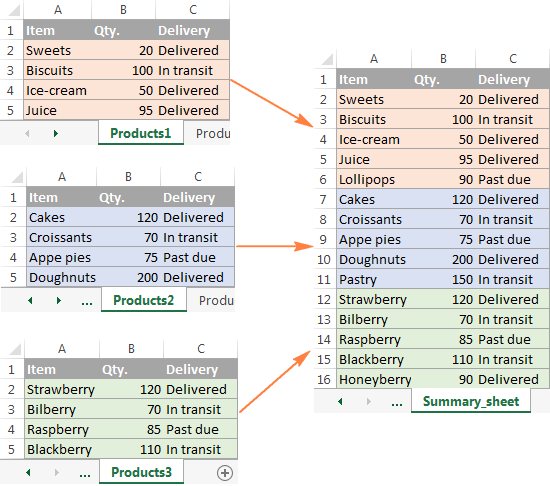Essential Paperwork for Manifestation Determination Meeting

Welcome to an exploration of one of the most critical yet often misunderstood components of special education law: the Manifestation Determination Meeting. This meeting, which assesses whether a student's behavior was caused by or had a direct relationship to their disability, involves several key documents. Let's dive into the essential paperwork needed for a Manifestation Determination Meeting, ensuring your school or institution is prepared to support your students accurately and legally.
Understanding the Manifestation Determination Meeting

Before we delve into the paperwork, it’s important to understand what a Manifestation Determination Meeting entails:
- A legal process to determine if a student’s behavior was a manifestation of their disability.
- Must be conducted within 10 school days of any decision to change the placement of a student with a disability because of a violation of a code of student conduct.
- Involves a review of the student’s Individualized Education Program (IEP), Behavior Intervention Plan (BIP), and other relevant documents.
Essential Paperwork for Manifestation Determination

The following documents are critical for a successful Manifestation Determination Meeting:
1. Individualized Education Program (IEP)

The IEP is the cornerstone document that outlines the student’s current educational needs, services, and goals. For the meeting:
- Review the most recent IEP for updates on goals, accommodations, and modifications.
- Check for any amendments or changes since the last formal IEP meeting.
📝 Note: Ensure the IEP is up-to-date to avoid any disputes during the manifestation determination review.
2. Behavior Intervention Plan (BIP)

If applicable, the BIP details strategies to address challenging behaviors and should be:
- Referenced to understand the interventions in place to manage or mitigate the student’s behavior.
- Analyzed for effectiveness in relation to the current behavior issue.
📝 Note: If a student does not have a BIP, consider this meeting an opportunity to address whether one should be developed.
3. Functional Behavioral Assessment (FBA)

An FBA provides data on the function of the student’s behavior, which is:
- Used to develop or refine a BIP if one is needed or existing ones are not effective.
- Critical for understanding the cause of behavior for the manifestation determination.
4. Progress Reports

Progress reports on the student’s academic and behavioral achievements:
- Show progress or lack thereof towards IEP goals.
- Provide insight into how well the current educational plan is working.
📝 Note: Progress reports are not just for parents; they are crucial for legal compliance and student advocacy during these meetings.
5. Relevant Disciplinary Records

All records pertaining to the student’s behavior incidents, including:
- Incident reports detailing the behavior in question.
- Any previous disciplinary actions or outcomes.
6. Medical Records and Reports

Documentation from healthcare providers that:
- Detail any changes in the student’s health or diagnosis.
- Provide a medical context to the behavior in question.
7. Psychological and Counseling Records

Reports from school counselors, psychologists, or therapists:
- Give insights into the student’s social-emotional status.
- Help to determine if behavior issues are linked to their disability.
8. Attendance Records

These can show:
- The student’s attendance patterns, which might correlate with behavior issues.
- Whether absenteeism or tardiness has contributed to the current issue.
9. Parental Input and Concerns

Any written or verbal communication from parents or guardians:
- Provides additional context and perspective on the student’s home environment.
- Should be documented and considered in the decision-making process.
📝 Note: The importance of parental involvement cannot be overstated. Their insights are invaluable for a complete understanding of the student's needs and behaviors.
The Role of These Documents

Each document serves a specific purpose in the Manifestation Determination Meeting:
- They help the team establish if the behavior was caused by or had a direct relationship to the student’s disability.
- They are used to evaluate the appropriateness and implementation of the student’s IEP and BIP.
- They inform the team about any need for changes or modifications to the educational plan or additional supports.
In sum, the Manifestation Determination Meeting is a legal and educational safeguard designed to ensure that students with disabilities are not disproportionately disciplined for behaviors that might be a result of their disability. By meticulously preparing the necessary paperwork, schools can engage in a comprehensive and fair review process. This meeting can lead to better student outcomes, reinforce trust between schools and families, and ensure compliance with IDEA (Individuals with Disabilities Education Act) mandates.
📝 Note: Being thorough with the documentation not only protects the student's rights but also safeguards the school's interests in maintaining a fair and equitable educational environment.
The wrap-up of this process underscores the importance of preparation. Schools must gather and organize the required documentation, involving key stakeholders like special education teachers, counselors, and parents to ensure a complete picture is available for the meeting. This collaborative approach not only meets legal standards but also promotes the student's academic and personal growth.
What happens if the behavior is found to be a manifestation of the disability?

+
The student must return to their current placement unless the parents and school agree otherwise. Additionally, a BIP is developed or reviewed to address the behavior, and the IEP might be revised if necessary.
Can a student be removed from school during the Manifestation Determination process?
+Yes, the student can be removed for up to 10 school days for behavior issues, regardless of whether it’s a manifestation of their disability. However, beyond that, further removals require a manifestation determination meeting.
Who attends the Manifestation Determination Meeting?
+Typically, the meeting involves the parents, the student (if appropriate), school administrators, the student’s IEP team, a representative of the local educational agency, and other individuals with special expertise about the student, as necessary.
What if the parents disagree with the outcome of the meeting?
+Parents have procedural safeguards to address disputes, including mediation, due process hearings, or filing a state complaint with the educational authorities.



